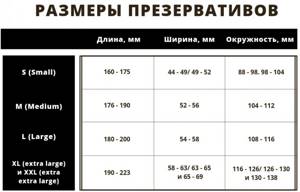Male contraception
In addition to the contraceptive effect, a condom also protects a woman from infections. The latter is important in the first months after childbirth, when the woman’s body is still very weak, and in the first 1-2 months there may be bloody discharge from the uterus (at least in small quantities), and the cervix remains slightly open. This creates a risk of uterine infection and serious complications. By the way, this is why it is not recommended to resume intimate relationships until the discharge from the uterus stops.
At the same time, after childbirth, many women experience hormonal changes, which causes vaginal dryness. Therefore, the condom “rubs” and its use causes discomfort to both spouses. Use lubricant and gradually everything will return to normal. Just remember that the latex of a condom can crack if it comes into contact with oils, so you should use only gel lubricants, and not Vaseline, hand cream or similar substances that happened to be at hand at the last moment. Even if the integrity of the condom is intact, oil lubricants can lead to the formation of microcracks in its wall, which increases the risk of unplanned conception.
Back to contents
Condom size chart
What sizes are condoms? It’s worth saying right away that in different countries and even between manufacturers there are different systems for dividing condoms by size - they can be either alphabetic or numeric, and also vary in meaning: the same indicators from one manufacturer can be labeled as “ medium”, and the other – “large”.
Thus, the width of standard European condoms is usually a couple of millimeters smaller than those sold on the Russian market, and the difference with Asian condoms can be a full size.
What condoms are considered standard in our country? Back in 1983, when barrier contraceptives in the USSR were also called “rubber product number two,” GOST 4645-81 was adopted, according to which the dimensions of the condom had to correspond to the following indicators:
- Length - 18 cm (± 2 cm)
- Width - 54 mm (± 2 mm)
- Condom weight 1.4 g (±0.3 g)
It must be said that some domestic manufacturers still rely on this standard, while others take the international designation system as a basis:
- Small - S or Small
- Medium - M or Medium
- Large - L or Large
- Very large - Extra Large or XXL
In millimeters, these dimensions correspond to the values listed below.

Once again, we repeat that the markings may differ, so always check the dimensions of the product before purchasing a condom from a new manufacturer. By the way, where is the condom size indicated? Typically on the back of the box, although some brands may place the “Extra Large” or “XXL” designation on the front of the box.
Natural methods of contraception
Calendar method. This method is based on the fact that in the middle of the menstrual cycle, when ovulation (the release of an egg from the ovary) is most likely, sexual intercourse is excluded or additional methods of contraception are used on these days. It is better not to use this method after childbirth, even if you personally did not have a single “misfire” with it before pregnancy. The restoration of menstrual function, the unpredictability of ovulation days, and sometimes the shift of these days from cycle to cycle - all this makes the calendar method extremely ineffective in the first year after childbirth for most women. And of course, it is wrong to count the days of the cycle from the day of birth (some women for some reason equate it with the first day of menstruation). When the cycle is completely restored, then perhaps it’s worth returning to counting “fertile” and “sterile” days. That is, if you are breastfeeding, you will be able to return to the calendar method only after lactation ends.
Measuring basal temperature. This method allows you to more accurately determine the day of ovulation (on this day the temperature in the rectum rises). But measuring basal temperature (BT) cannot be considered a reliable method for women who are breastfeeding and have a child under 1-1.5 years of age. On the one hand, BT depends not only on the level of certain hormones, but also on the condition of the genital organs. Postpartum processes in the uterus and ovaries can mimic fluctuations in BBT, which leads to errors in assessing the picture and to the risk of unwanted conception. On the other hand, BT should be measured after at least 6 hours of restful sleep. And for a nursing mother and even for many mothers who do not breastfeed their babies, sleep of such duration is a dream, a sweet fantasy... So the effectiveness of the method does not exceed 50%, which, of course, is very little.
Back to contents
Hormonal contraception
Hormonal contraceptives traditionally occupy first place among means of preventing pregnancy and provide the highest percentage of protection. Hormonal contraceptives suppress ovulation, i.e. interfere with the development and release of the egg from the ovary. Under the influence of these drugs, the structure of the inner lining of the uterus, the endometrium, also changes, as a result of which the fertilized egg cannot attach to the walls of the uterus. Hormonal contraceptives thicken cervical mucus, making the cervix impenetrable to sperm.
Mini-drinks. For use after childbirth, special medications that do not affect feeding are recommended. Such drugs are called “mini-pills” (low-dose oral contraceptives). These include, for example, Continuin, Exluton, Femulen, Microlut, Charozetta. They contain only one hormone - gestagen, which acts at the level of the uterus and does not change the properties of mother's milk (if the mother is breastfeeding). Mini-pills must be taken daily, without breaks, at exactly the same time, in order to maintain a constant concentration of hormones in the body (plus or minus 1 hour). You can stop taking the drug at any day. These drugs are designed specifically for nursing mothers; they are also suitable for women of older reproductive age (after 45 years). When used in other cases, they can cause menstrual irregularities (shortening, intermenstrual bleeding).
Injections. There is another form of progestin contraceptives - injection. This is the drug Depo-Provera, which is administered intramuscularly once every 2 months. You should not skip the time of the next injection: the effectiveness of the method is sharply reduced. The drug, like any other hormonal contraceptives, can be used only after consultation with a doctor.
Contraceptive effectiveness In 1939, American gynecologist Raymond Pearl proposed an index for numerically expressing fertility and assessing the effectiveness of contraceptives. The Pearl index is equal to the number of conceptions within one year in 100 women using a particular method of contraception and characterizes its contraceptive effect.
| Female sterilization | 0,4 |
| Male sterilization | 0,15 |
| Intrauterine system "Mirena" | 0,1 |
| Intrauterine contraceptives (spirals) | 1,0 |
| Combined oral contraceptives are less | 0,5 |
| Mini-drink less | 4,3 |
| Implantation contraception (Norplant) | 0,3 |
| Injectable contraception (Depo-Provera) | less than 1.0 |
| Condoms | 12 |
| Spermicides | 21 |
| Coitus interruptus | 19 |
| Without contraception | 85 |
Implantation contraception. Finally, using the implantation form of a progestin contraceptive, you can solve the problem of pregnancy for the next 5 years. This drug (the most famous is Norplant) is administered by a doctor under the skin in the form of small capsules and is gradually released from them, creating a contraceptive effect. It is clear that this path is the least troublesome, but requires clear plans for the future, although removal of the capsules is possible at the request of the woman at any time. Against the background of Norplant, the nature of menstruation changes: they become scanty, rare, and possibly irregular. Not all gynecologists are proficient in the technique of inserting and removing Norplant, therefore, when installing a contraceptive, it is advisable not to lose contact with a doctor who knows this technique during the entire period of action (5 years). The introduction of Norplant is, although small, still a surgical intervention, after which infectious and inflammatory complications are possible. It cannot be said that this technique is widespread in our country.
Combined oral contraceptives (ok). These are exactly the oral contraceptives that are better known to most women. The number of their names is close to two hundred. Unlike mini-pills, which contain only one type of hormone - gestagens, combined oral contraceptives contain estrogens and gestagens. This tandem allows you to maintain hormonal levels at a natural level, typical for women outside the period of breastfeeding, providing a sufficient contraceptive effect and regular menstrual-like bleeding. A gynecologist will help you choose pills, taking into account the woman’s general and hormonal condition, the presence of certain diseases of both the genital area and other organs and systems. Don’t take risks by buying something your friend praises on your own: these pills may cause side effects for you.
In addition, combined OCs are used only after breastfeeding has stopped. The fact is that these drugs contain two components - gestagens (they are also found in the above-described mini-pills, injection and implantation forms) and estrogens. Moreover, oral contraceptives contain these hormones in large quantities. In turn, hormones enter the baby’s body with milk, which is unsafe.
Finally, OCs have quite a few contraindications, which women are not always aware of. Therefore, before taking them, it is advisable to undergo a certain examination, especially if such contraindications existed previously.
Postcoital contraceptives. Contraceptives such as Postinor, which contain very high doses of hormones, are used “after the fact.” They “work” on the same principle as any other hormonal contraceptives. In the postpartum period, it is better not to use these drugs and use them only in emergency cases. In addition, postcoital contraceptives often cause complications in the form of bleeding - and it is unclear whether this is due to the drug or to complications after childbirth. The amount of hormones supplied to the baby through milk will be very large in this case. So postcoital contraception remains, as it should be, emergency - that is, for the most extreme case.
Thus, of all hormonal contraceptives, mini-pills can be considered the safest for breastfeeding women. Women who are not breastfeeding can use any medications after consulting a gynecologist.
Once again, it is worth emphasizing that taking any hormonal medications should be discussed with your doctor. Contraceptives can aggravate the course of various chronic diseases, and therefore are contraindicated in case of vascular thrombosis (if it was previously, during pregnancy or present), jaundice or severe liver diseases, tumors, bleeding from the genital tract and many other conditions. Sometimes a gynecologist conducts an examination before recommending this or that OC to a woman.
Back to contents
What about female condoms?
Photo.com
Female condoms, or femidoms, provide the same protection against pregnancy and STDs as external male condoms. They are made from synthetic latex and are pre-lubricated with silicone lubricant.
Unlike external barrier contraceptives, internal condoms come in one size (length 18 cm, diameter 8 cm) designed to fit most vaginal canals.
These products have both their pros and cons: on the one hand, female condoms are hypoallergenic and can be used for erection problems, but on the other hand, if the femid is put on incorrectly, it can cause pain and itching in a woman. Therefore, you need to make a decision about their use together with your partner.
The main thing is never use both types of condoms (male and female) at the same time. Too much friction can cause them to stick together and slide off, ultimately leaving you unprotected.
- Maria Minaeva
Intrauterine contraceptives
An intrauterine device (IUD) is an object that is placed in the uterus to prevent the embryo from attaching to its wall, that is, the onset of pregnancy. The IUD does not prevent fertilization, but causes very early miscarriage. There are contraindications for using an IUD, so this issue should be discussed with a gynecologist. In addition, the IUD is installed no earlier than 6 weeks after a natural birth that occurred without complications. An IUD is not installed after a cesarean section: the scar in the uterus is regarded as a “weak link” that can be damaged if a foreign object is constantly in the uterus. In addition, there are many contraindications for the installation of an IUD (inflammatory diseases of the uterus in the postpartum period, endometriosis, serious diseases of the cardiovascular system, etc.).
The IUD does not affect the quantity and quality of breast milk. A woman is recommended to have a break of at least 6-12 months from stopping the use of the IUD before trying to conceive - so that there is no threat of termination of pregnancy.
Wearing an IUD involves monitoring the condition of the spiral. In addition, if you wear an IUD, you need to visit a gynecologist twice a year for preventive purposes, since the IUD can provoke inflammation of the uterus and appendages - and this condition must be prevented or diagnosed as quickly as possible.
You can wear the IUD for up to 5 years; longer wearing greatly increases the likelihood of developing inflammatory complications.
Intrauterine contraceptives also include the Mirena system, which, like other intrauterine contraceptives, is inserted into the uterine cavity, but has an additional effect due to the fact that it constantly releases small amounts of gestagens, which have a local effect. Due to this, menstrual flow is reduced, up to complete temporary disappearance, and the greatest contraceptive effect is achieved.
Back to contents
Local preparations
Spermicides are locally active substances that are injected into the vagina in a certain form. These are drugs in the form of suppositories or vaginal tablets, such as Patentex Oval, Pharmatex, Contraceptin, Ginekotex. They are inserted into the vagina 5-10 minutes before intercourse. The foam formed under the influence of body heat immobilizes sperm and also kills some pathogenic bacteria. Spermicides are destroyed quite quickly and are also removed from the vagina during friction. Therefore, before each repeated intercourse during one meeting, it is necessary to introduce a new suppository.
Spermicides help women overcome postpartum vaginal dryness without the need for additional lubricants.
Back to contents
How to apply lubricant
It's not difficult to figure out how to use lubricant for condoms. Before sexual intercourse, a small amount of the product is applied to a condom placed on the penis. If necessary, also rub a couple of drops at the entrance to the woman’s vagina or anus.
That's all the rules for using lubricant for condoms. Lubricants can be used without a condom, applied directly to the penis. If one of the partners feels a burning sensation or discomfort, it is recommended to stop sexual intercourse and wash off the lubricant when using intimate hygiene products.
Surgical methods
Extreme types of contraception are rare: they require either express indications or serious intentions of the woman. Such methods include, for example, surgical sterilization, i.e. ligation of the fallopian tubes, as a result of which the union of the egg and sperm that occurs in the fallopian tube becomes impossible: as a result of an artificially formed barrier, the female and male reproductive cells cannot meet. The effectiveness of the method reaches 100%, but it may happen that after many years of a quiet life, a woman again wants to become a mother. And solving the problem will be very difficult: it is impossible to restore the patency of the fallopian tube after ligation, and pregnancy can only occur through IVF (“test tube baby”).
The same applies to male sterilization, which involves cutting the vas deferens on both sides. As a result, no sperm gets into the ejaculate. The testicles remain unharmed and continue to produce hormones, so libido, erection and orgasm are not affected.
To summarize, we can say that contraceptive methods for women after childbirth are as varied and individual as for all other representatives of the fair sex. Choosing the best method means protecting yourself from unwanted pregnancy, your family from possible conflicts, and your children from insults in the future. Think and start right now!










